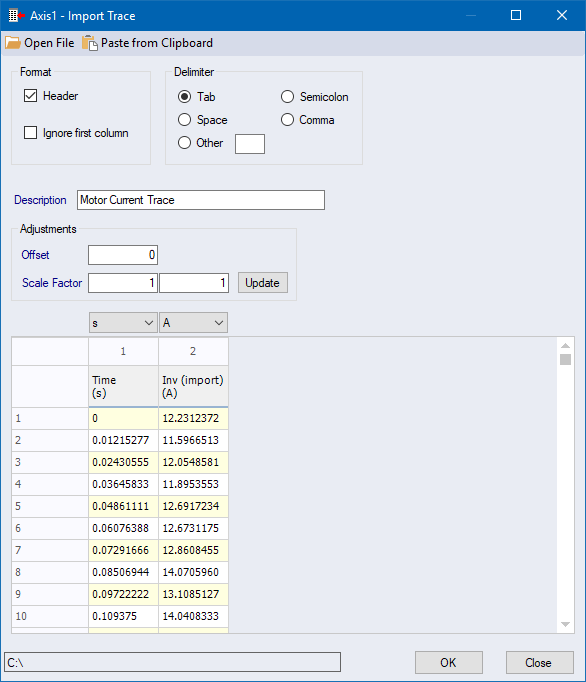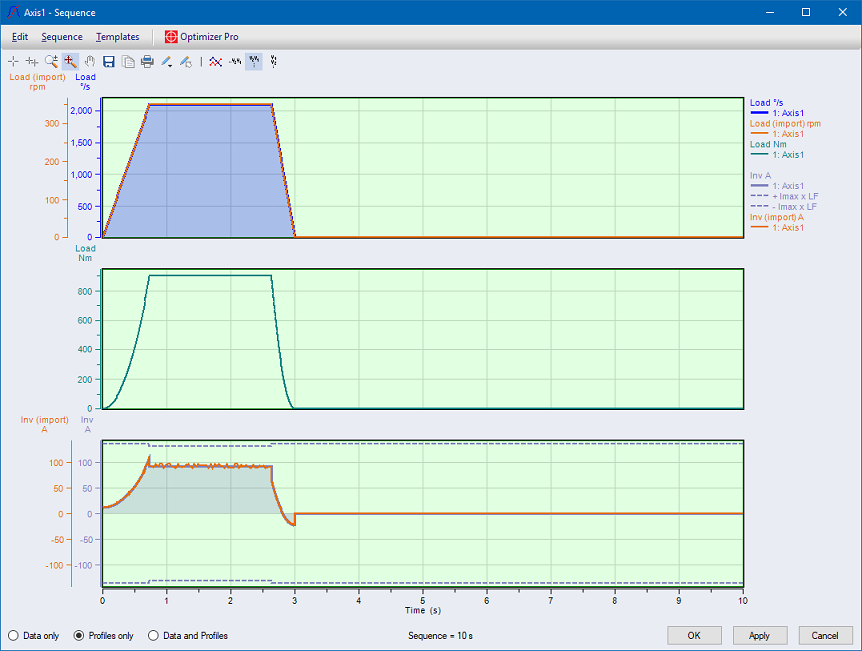Import Trace |
The Import Trace feature (available in the ADVANCED and PRO versions only) imports a trace and overlays it on top of its calculated profile in the Sequence chart. A trace can be any profile that is selectable to be displayed in the Sequence chart, but typically, the most commonly imported traces are:
The Import Trace feature is ideal for benchmarking and design validation, because it allows users to directly compare calculated profiles with measured profiles. And when they do not match, it is very clear where the differences are, and what changes need to be made.
To import a trace, from the Sequence chart toolbar, open the 'Select Profiles' form where you can select and configure the profiles displayed in the Sequence chart. Below, we have two profiles using the Import Trace feature. Profile 2 is the Load Velocity, which already has valid data as shown by the green Import button. Profile 6 is the Inverter Current to the Motor (aka Motor Current), and its Import button is white indicating no data has been imported.

To select the Profile 6 import data, click the 'Import' button above, open the Import Trace form below.

First import the data. Import data from a text or Excel file, or paste from the Clipboard. Next specify formatting including the delimter. Note that data copied to the clipboard from Excel is Tab delimited. This is why ‘Tab’ is the default delimiter.
The Description is for reference, and often the date and time the trace data was originally captured is included.
The Offset shifts the profile back (<0) and forward (>0) in time. This is useful when the import trace time values are shifted with respect to the calculated profile.
The Scale Factors are a convenient way to adjust the trace data to units available in the program. The scale factors are also useful in adjusting data from oscilloscopes that use custom units, or even from drives and transducers that provide an analog signal, such as +/- 10 V. The values in the column are multiplied by the factor on top of the column.
Finally, make sure to set the units that match the data.
And below is the above example with Profile 2 as the imported Load Velocity, and Profile 6 as the imported Inverter Current to the Motor (aka Motor Current), both overlapping perfectly on top of the calculated profiles, showing a very accurate model. One reason everything lines up perfectly is the Thrust Load Formula used to model the dynamic load.
